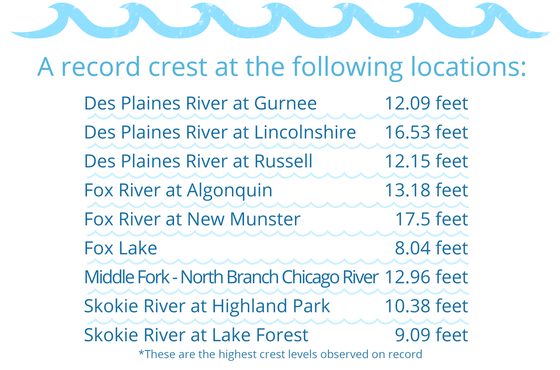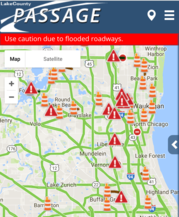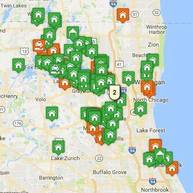July 2017 Flood by the Numbers
Lake County recently experienced one of the worst flooding events
ever. Let's take a look at the "flood by the numbers."
On July 11 and 12, Lake County was inundated by VERY heavy rain. Some communities received over seven inches of rain in a 24-hour period. The rain not only led to flash flooding that impacted roads, homes, parks, businesses, and more, but also resulted in flooding to our major rivers that prolonged flooding in several communities.
Record Flooding of Major River Systems
The Fox, Des Plaines, and Skokie rivers were at record crest levels, which is the highest level the water got before it began to recede. In fact, water levels on many rivers continued to rise several days after it rained. This is because the Fox, Des Plaines and Skokie rivers flow south, meaning significant rain from Wisconsin flows into Lake County. Because of this, bodies of water like Fox Lake did not crest until July 17, six days after the significant rainfall.

Lake County's Response
Following the devastating floods, Lake County government and its
partners worked non-stop to respond to the disaster and provide needed
resources and assistance. Lake County activated its Emergency Operations Center
on July 12, and Lake County Board Chairman Aaron Lawlor proclaimed Lake County
a disaster area later that day. Following a visit from Illinois Governor Bruce Rauner on July 14, the governor issued a State disaster declaration, which can open the door for federal assistance.
 Roads
Major roads were closed and commutes were disrupted for several days in a row. Throughout the disaster, the Lake County Division of Transportation had a team of traffic operators and engineers updating Lake County PASSAGE around the clock to make sure that motorists had the information they needed to navigate local roads, and find an open route. They were also able to remotely observe traffic conditions and adjust signal timings as flooding events unfolded. This was done in real time to help traffic adjust to road closures and backups.
Lake County PASSAGE had 162,508 hits to the website in an 8-day period during the height of flooding. To put that into context, PASSAGE had 9,834 hits for the entire month of June. Learn more about how Lake County PASSAGE operates in this behind-the-scenes video.
|
Sandbags and Clean Up Kits
Lake County Public Works delivered more than 375,000 sandbags and 1500 clean up kits to municipalities and townships. Public Works also loaned out equipment like pumps, suction hoses, and machines to fill sandbags.

Flood Damage Form/Damage Assessment
Lake County and local communities began damage assessment as floodwaters started to recede. To help properly quantify the damages in Lake County, we asked residents to fill out a form and let us know about their flood damage. We received nearly 3500 responses from residents, and have shared this information with municipalities and reported this information to the State.
This has helped Lake County submit a complete damage assessment report, which will help determine eligibility for federal assistance. |
|
 |
For more information about the 2017 flood, which includes helpful resources and what residents should do if they've been impacted, visit www.lakecountyil.gov/flood.
| 




